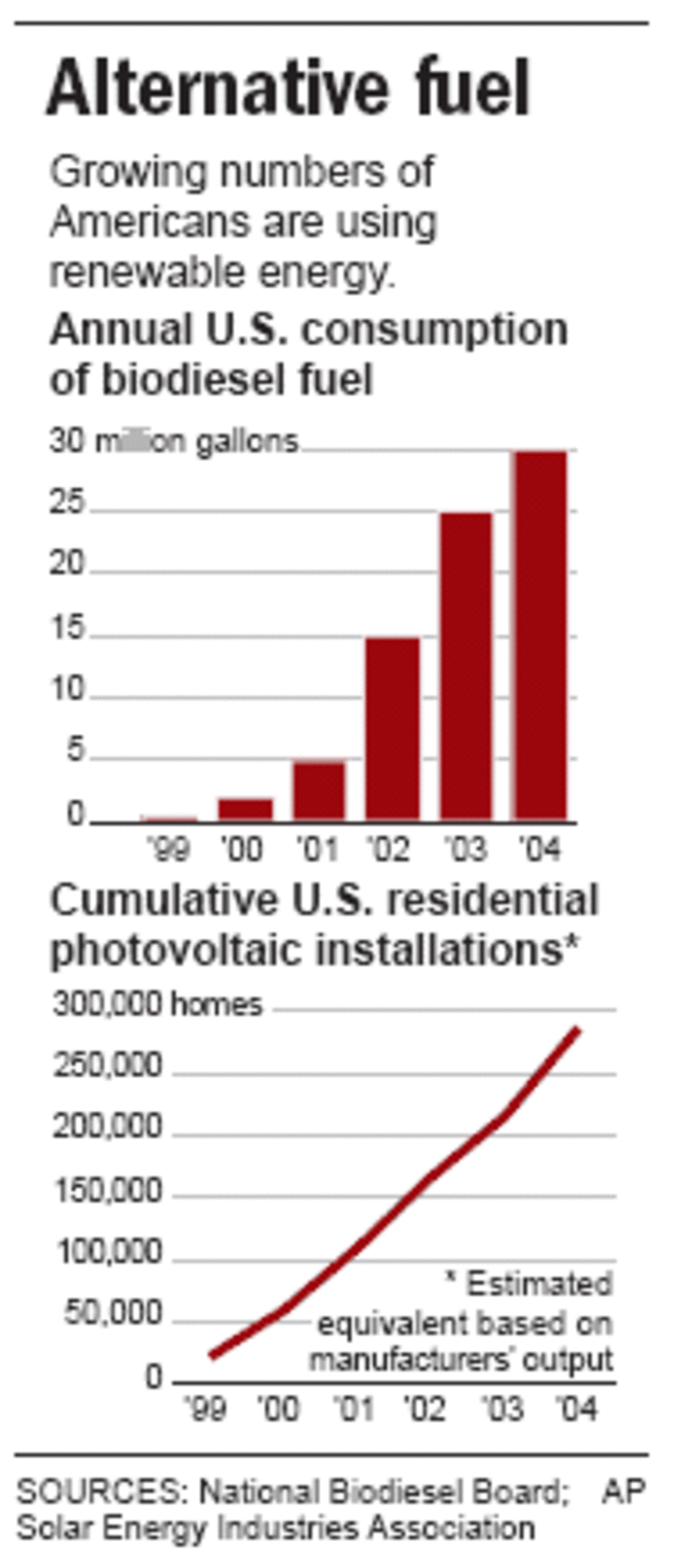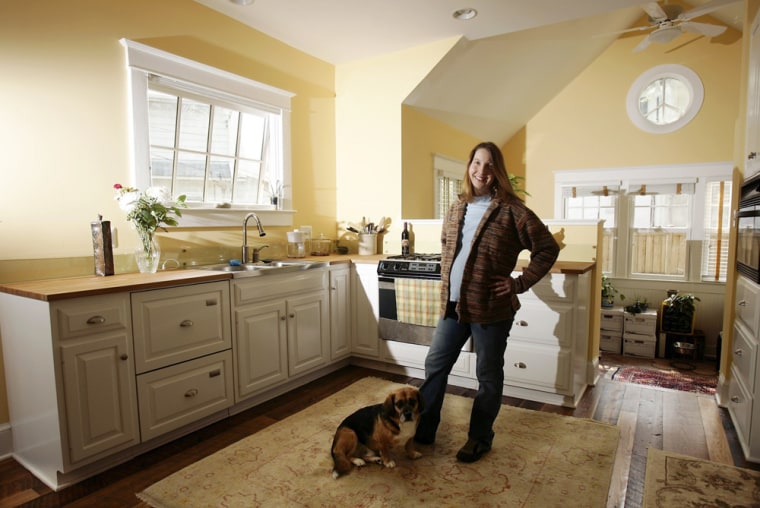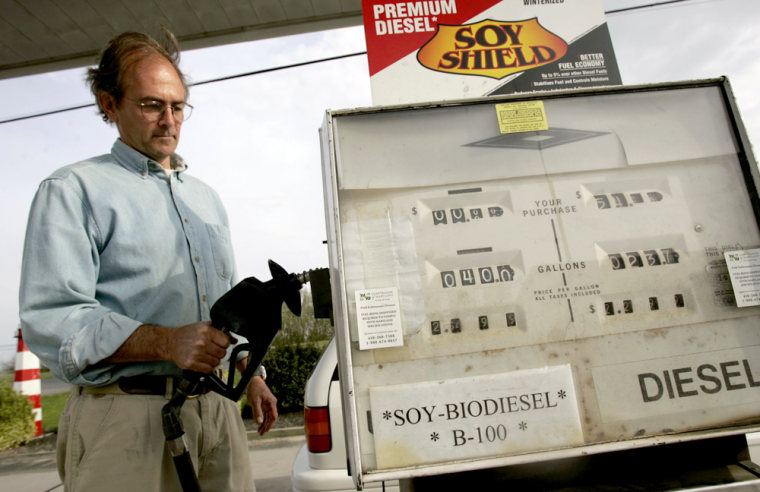For people like Ronald Cascio, who fuels his pickup with a soybean oil derivative, and J.D. Doliner, whose home is partly solar powered, the high price of energy isn’t a worry.
That doesn’t mean their renewable energy preferences come cheap. In fact, it requires an extra financial commitment to wean one’s home or vehicle off fossil fuels.
Nonetheless, a growing number of Americans are embracing cleaner technologies and more energy-efficient lifestyles. It makes them feel good and, depending on how high prices rise for traditional energy sources, they say renewables might even make economic sense over the long haul.
“Some people spend their money on jet-skis and boats,” explained Cascio, who lives in Berlin, Md. “So, say we spend another $1,000 a year on fuel than we have to, what’s the big deal? We feel good about it. You can’t put a price on that.”
Costs, benefits
Cascio regularly spends about $3.35 a gallon for pure biodiesel, chemically altered soybean oil which is fully compatible with the standard diesel engine in his 1989 Ford truck. But because diesel vehicles are nearly a third more efficient than those that run on gasoline, Cascio said his choice of fuel isn’t looking so bad right now that gasoline averages more than $2.20 a gallon nationwide.

In the case of Doliner, who lives in Arlington, Va., it may take more than three decades for the $18,000 solar panel system she and her husband installed to pay for itself. But the former venture capitalist said the investment is worth it merely for the “psychic income” she enjoys.
The Doliners recently renovated their home to be about 50 percent more energy efficient, but they still get about two-thirds of their electricity from the grid and rely on natural gas for home heating and to back up their solar water heater.
“But we are having an impact on the number of power plants that are built,” Doliner said.
'Cheaper to save energy'
That’s right, said Paul Torcellini, who researches residential and commercial building designs for the Department of Energy’s National Renewable Energy Laboratory. Reducing the country’s dependence on fossil fuels requires two behavioral changes: adopting renewables and boosting energy efficiency, he said.
“It is much cheaper to save energy than it is to make it, by at least a factor of two to one,” Torcellini said. Anyone considering solar panels should buy the most energy-efficient appliances and light bulbs and make sure their walls and windows are properly insulated, he said.
Those interested in biodiesel simply need a diesel-engine vehicle. To show its support of the technology, DaimlerChrysler ships its new Jeep Liberty off the assembly line fueled with B5, which contains 5 percent biodiesel. The most common grade of biodiesel at the pump, B20, is 20 percent biodiesel and 80 percent regular diesel.
The amount of biodiesel sold in the U.S. has grown from 500,000 gallons in 1999 to roughly 30 million gallons in 2004, said Jenna Higgins, a spokeswoman for the National Biodiesel Board. By comparison, the U.S. burns more than 100 billion gallons of gasoline each year and 4 billion gallons of ethanol, a fuel additive derived from corn.
The Solar Energy Industry Association estimates there are enough photovoltaic panels installed in the U.S. to power about 286,000 homes, up from 60,000 homes in 2000. A considerably smaller group of enthusiasts — perhaps 20,000 homeowners nationwide — have erected wind turbines on their property, according to the American Wind Energy Association.
Push for more tax incentives
Wider acceptance of alternative energy by consumers will require a significant expansion of what is now only a limited patchwork of government refunds and tax incentives.
“If the government subsidized renewable energy the way it does oil and gas, it would be mainstream in no time,” said Mark Prebilic, of Poolesville, Md. He received a $2,000 refund from the state government and a $2,000 tax credit from the federal government when he installed solar panels in 2001 that now provide about a third of his home’s power needs. Prebilic expects to make back the $13,000 investment he made in a little more than 20 years.

Relatively generous government incentives — and ample sunshine — in California has led to the construction of entire neighborhoods with homes that harness the sun’s energy, said Rhone Resch, executive director of the Solar Energy Industry Association in Washington. In Sacramento, Premier Homes sold 95 homes over the past year in the $250,000-$450,000 range that were equipped with solar panels for electricity.
Indeed, Americans tanking up with biofuel or installing solar panels are hardly back-to-the-land types denying themselves modern amenities and living off the grid. Doliner’s 1,500-square-foot suburban home is “green,” with roof shingles made from recycled tires, carpet made from corn starch and insulation that is partly soy-based.
“Our house isn’t made of twigs and granola,” she said.
